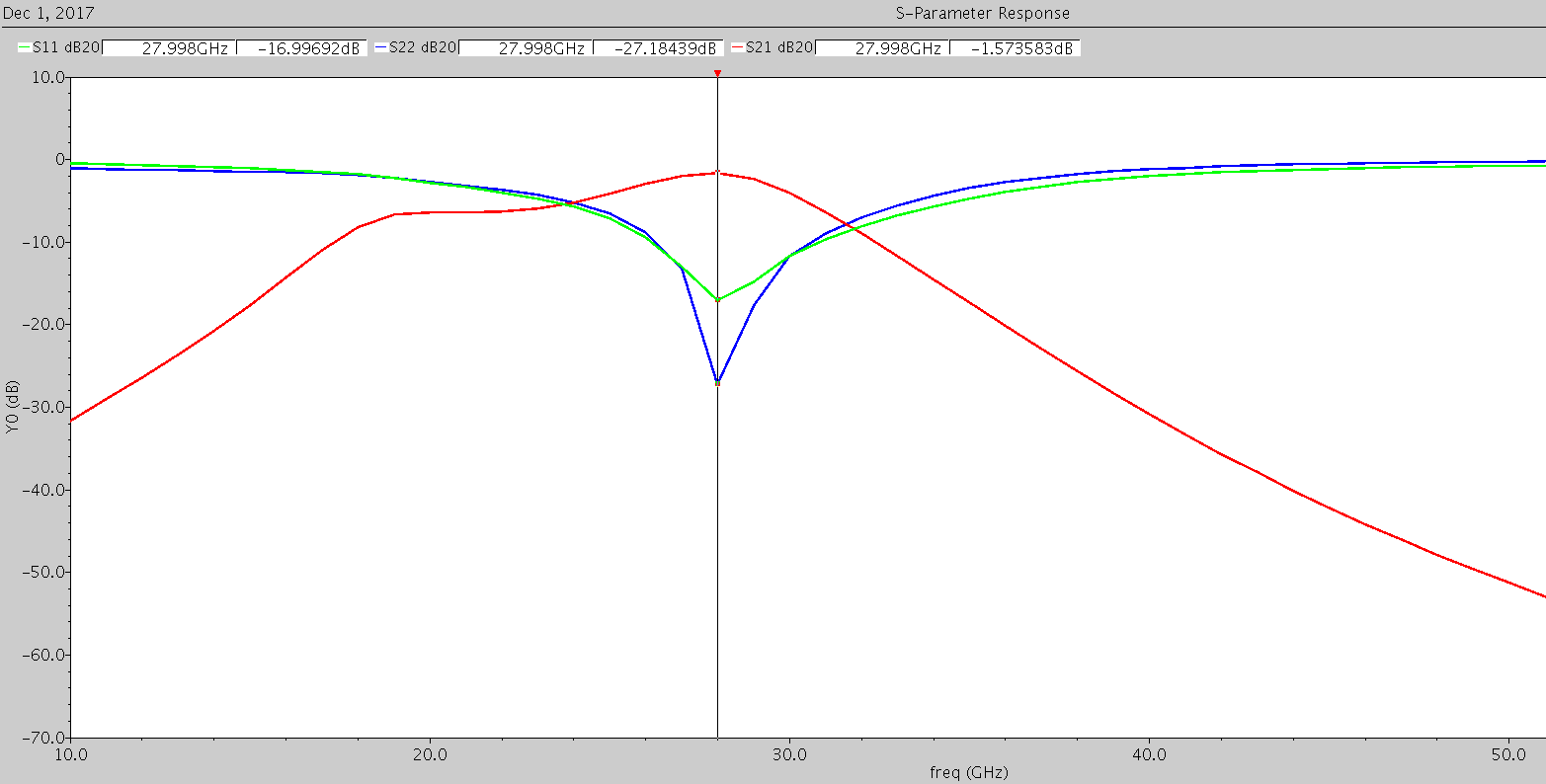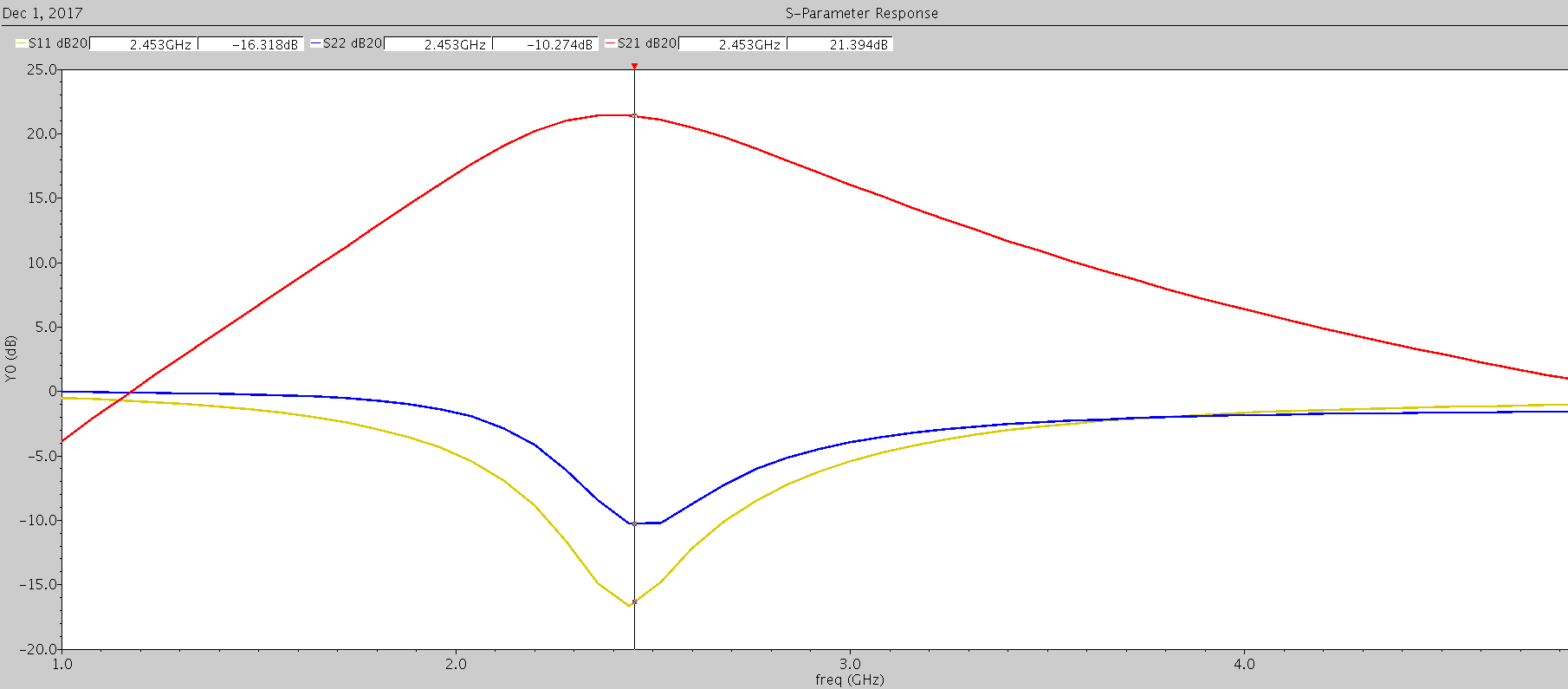S21 response on CMOS Power Amplifier
Currently i'm designing CMOS PA in cadence tool, my PA response are listed below:
1. S11 at 27Ghz is -17.311 db
2. S22 at 27 Ghz is -15.23 db
3. Unfortunately my S21 response is below 0 db (-19.44db).
I have go thru others researches paper their response for S21 is above 10db. I'm using cascade topology and even after increasing the stage I still couldn't get better S21 response. Any idea how to get better S21 response?
p/s: I did design for 2.4Ghz, and manage to get S21 above 0 db.
Are you talking about simulation or hardware measurement? In the former case, trace the input signal through the amplifier and check against expected signal level in each stage.
Thanks for ur reply. I'm talking about simulation. Attached here is two files on S-parameter responses for 2.4GHz and 28GHz.
Reattached the files
Post your schematic.. Give the details about the PDK which you work with.
As said, it's easy to find out in simulation why there's no or insufficient gain.
Attached is the Schematic design picture together with S parameter response. I'm using 0.18um process technology.



Is 0.18um process suitable for 28Ghz amplification ? I don't think so..
What about the fT of the MOS ? It should be more than 100GHz for a appropriate operation.
We don't know DC bias points too and Inductor/Capacitor values..
It's really hard to say something.
Agreed, the technology is likely the issue. Have you seen any examples of other using this process for >27GHz?
Perhaps if you try using ideal inductors instead of the PDK ones it will work better... but only in simulation.
Yes i have seen other researches manage to get good response on 0.18um for >27GHz. One of the example can be found in the paper entitle "A Ka-Band CMOS Low-Noise Amplifier for
Ka-Band Communication System" written in 2010 by Zhe Yang Huang.
But which 0.18um process ? Every Foundry may have a 0.18um process but it doesn't mean that each one would be used for mmWave application.
That's the point which you confuse..
